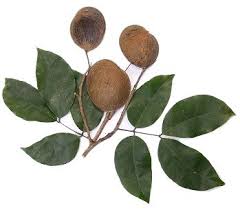Name: Copaiba Balsam Oil, South America
Species: Copaifera langsdorfii
Part: Balsam
Class: Sesquiterpene
Country: South America
For those struggling with pronunciation, try saying “Ko-pah-ee-bah”.
Copaiba has been used and shows great benefits for the following:
• Pain and arthritis
• Breaks up tumors
• cystitis
• chronic diarrhea
• reduce hemorrhoids
• disinfects
• diuretic
• strengthens kidney function
• laxative (remember, only if your body needs it)
• anti-fungal
• gastro-protective
• decreases stomach ulcers
• decreases pain
• expectorant
• respiratory tract/bronchitis/sinusitis
• antiseptic for the urinary tract
• incontinence
• rheumatoid arthritis
• herpes
• Tuberculosis
These are some of a veterinary's favorite ways to use Copaiba (posted on the web):
• For urinary incontinence in dogs
• For arthritis pain in cats and dogs
• As an anti-inflammatory in horses – with the gastro-protective properties– no Gastro-Guard is needed!
• For angina chest pains in humans
• As a replacement for any Ibuprofen, Aspirin, Tylenol, Cortisone
• For ANY arthritis or pain in humans
• Just about any condition that needs inflammation reduced
• As a magnifier to any other oil I am using
• For humans – try a couple drops under the tongue, once or twice a day for a month and just see what happens.
Sold in Amazonian pharmacies and used for nearly 800 years in folk medicine, copaiba was also listed in the US Pharmacopeia from 1820 to 1910 for topical and oral uses and is still on the FDA GRAS list (Generally Regarded as Safe). Copaiba is the highest in beta-caryophyllene which is an anti-inflammatory compound. A 1996 study showed beta-caryophyllene to be effective in treating stress induced ulcers. Beta-caryophyllene is also found in helichrysum at between 8 and 12%, while copaiba contains 50% beta-car. Clove oil contains 6-8% beta-caryophyllene in comparison.
Marc Schreuder, a Young Living guy – in a conference call said that copaiba is helichrysum on steroids. In 2009, after 8 years of studying copaiba, he said it was his number one favourite oil with frankincense coming in at number 2. He also said that combining copaiba and frankincense would give you the highest spiritual and emotional oil blend. Just like sandalwood is considered an excellent emotional supportive oil, copaiba is six times better and Marc called copaiba, sandalwood on steroids, due to its high sesquiterpene content. He also liked copaiba mixed with a little peppermint for pain, applied topically.
For oral consumption, traditional uses are as much as ½ teaspoon twice daily. Four to six drops per day in a capsule should show benefit. It is not really a diffusing oil, but can be when mixed with other pure essential oils like Frankincense, and this aromatic treasure is currently found in The Oil Shoppe’s Deep Tissue Pain Essential Oil Blend.
Marc also pointed out that much of the copaiba oil marketed is adulterated with soy bean oil or kerosene to extend the yield. The Oil Shop’s is not.
How To Use
Directions:
Dietary Supplement: Put 2 drops in a capsule. Take three times daily or as needed. *Note: Only ingest essential oils upon direction from you aromatherapist or doctor. Topical: Apply 2-4 drops directly to desired area. Dilution not required, except for the most sensitive skin. Use as needed.
Aromatic: Diffuse up to one hour three times daily.
Did You Know?
Copaiba resin (what is tapped from the copaiba tree) has been used for hundreds of years as an incense in some Central and South American cultures.
* Copaiba oleoresin and essential oil was first recorded in European medicine journals in 1625.
* Copaiba essential oil contains the highest amounts of beta caryophyllene (55 percent) of any known essential oil.
Caution: If you are nursing, pregnant, taking medication, or have a medical condition, consult a physician before using.
Reference: Essential Oil DataBase
Articles Latest
- Chamomile Roman - Chamaemelum nobile
- Chamomile Maroc - Ormenis multicaulis
- Chamomile German - Matricaria recutica
- From Biology To Aromatherapy
- Plant Messengers
- Celery Seed-Apium graveolens
- Cedarwood Virginian - Juniperus virginiana
- Cedarwood, Texas- Juniperus ashei - Essential oils
- Cedarwood Atlas- Cedrus atlantica - Essential Oils
- Cassie - Acacia Farnesiana - sweet acacia
- Cassia - Cinnamomum Cassia
- Cascarilla Bark - Croton eluteria
- Carrot Seed- Dacus Carota
- CARDAMON
- CARAWAY
- CANANGA
- CAMPHOR
- CALAMUS
- Calamintha-Calamintha officinalis
- CAJEPUT- Melaleuca cajeputi
- Plant Expression
Articles-Most Read
- Home
- Balsam Canadian - Abies balsamea
- Balsam Peru
- Copaiba Essential Oil
- North America: Tea Tree and Monarda-3
- Basil French - Ocimum basilicum
- Basil Exotic
- North America: Tea Tree and Monarda-2
- Exploring Transcultural Constants
- Thyme Essential Oil
- Balsam Tolu
- Palma Rosa
- The Bioactivity of Essential Oils
- Bay - West Indian - Pimenta racemosa
- Benzoin - Styrax benzoin
- Why Pharmacology Cannot Demonstrate Essential Oil Efficacy
- Exploring Essential Oil Activity The Conventional Way
- Complex information From Plants
- Aromatherapy: An Answer
- Contacts

